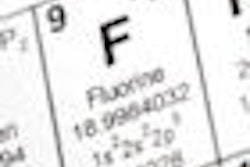
Following last month's warning from the FDA regarding dental patients being burned by electric handpieces, manufacturers of these products are working to reassure customers about the safety of their products and also remind them that regular maintenance is key.
The FDA's safety warning came one month after the agency notified all handpiece manufacturers that there continue to be adverse reports of patients being burned -- in some cases severely -- by electric handpieces that overheat during treatment. The FDA issued similar warnings to the industry and the public in 2007.
"In this advisory, the FDA is talking about issues of design," said Tom Louisell, regulatory compliance manager at A-dec, which distributes W&H equipment. "There's no common consensus on how to address it in the industry -- we're working on technical solutions that I can't go into, but inevitably, when one company comes up with a solution, they'll all have to incorporate it."
Rick Gross, senior product manager for DentalEZ, concurred. "We all have the same problem, and it's in the gearing," he told DrBicuspid.com.
“The FDA is talking about issues of design.”
— Tom Louisell, regulatory compliance
manager, A-dec
Indeed, electric dental handpieces are largely identical. "There really are no differences in the way the handpieces from different manufacturers operate," Louisell explained. "They use the same ISO [International Organization for Standardization] standard for the coupling. You can actually take a W&H attachment and snap it onto a KaVo motor. The difference is subtly in the operating temperature."
The significant differences in the proper usage of pneumatic handpieces -- long the industry standard -- and electric models are a primary source of the issues. "My experience is that for people moving from air to electric, there's a learning curve," Gross said.
The situation is not limited to established practitioners figuring out how to use new technology. "There are only a couple dental schools out of the 50 or so in the country that even teach young dentists how to use these systems," Louisell explained. "They're still training on pneumatic handpieces, so they're getting introduced once out in the field and told of the benefits without understanding the drawbacks."
Quick preps and reductions sound like a great thing for someone with a lot of student loans, he added.
Pneumatic vs. electric
The primary difference between the two types of handpieces lies in their power source. The air-powered motors are power-limited because the supply is consistent, so dentists may have to back off when they encounter resistance, then resume the feathering process associated with this type of handpiece, Louisell noted. When they are worn out, "the air turbines in a pneumatic system will stall and the dentist knows it's time for repairs," he said.
Conversely, electric handpieces have a micromotor that supplies constant torque, and it has a feedback mechanism, Louisell explained. "When it senses the RPMs slowing as a result of the contact with the tooth, it compensates and increases the energy to the micromotor so it can sustain a constant speed," he said.
Therein lies the danger with worn-out handpieces: More power is pumped to worn gears not operating efficiently. "Heat is generated and a transducer effect takes place," Louisell said. "That heat has to go somewhere, and it can burn a patient."
The bearing cage inside of the handpiece also wears out with use. "Once the bearing cage material that keeps the bearings in the raceway space breaks or melts, it goes from a poorly operating handpiece to a dangerous one right away," Louisell warned. "There's no internal guiding configuration for the bearings to rotate around on the spindle after the cage has failed. Now you're creating a lot friction, a lot of heat instantaneously. When that happens on a pneumatic handpiece -- the same principal applies -- but it doesn't cause the handpiece to heat up, it just stalls."
Other causes of failure
A lack of adherence to maintenance schedules is the primary culprit in instances of overheated handpieces. But a patient can be burned in two ways with a brand-new one. The first is true for pneumatic handpieces as well: If the push button on the back of the handpiece is depressed while the handpiece is operating at a high speed, "that contact between the bottom of the button and the top of the chucking mechanism that holds the dental work results in the instantaneous heat-up of that head and it will cause a burn immediately," Louisell said.
The second involves misuse. "A dentist in a hurry may put a bur on a 1:5 handpiece and operate it by feathering. But if you do that, it's like letting the clutch out in fifth gear at a stop," he explained. "The 1:5 attachment is not designed for low-speed work. And so you will heat up the handpiece."
The problem is often exacerbated by dentists who want to do the procedure dry to more clearly see what they're doing, Louisell added. "So they use the toggle on the foot control to shut the water off, and that's OK to do with a pneumatic and some of the other attachments," he said. "But if you operate a high-speed attachment for any length of time without water coolant going through the handpiece, that will heat it up as well."
Avoiding catastrophe
Dentists can touch a handpiece to an exposed section of his or her arm before a procedure on a patient to see if it is hot. One that is broken down will likely heat up quickly but practitioners shouldn't rely exclusively on this test. The best ways to avoid burned patients are clear: Obtain proper training and perform regular maintenance.
"Spending more time practicing before jumping in and doing a procedure is just a smart thing to do," said Gross, who also recommended using the sales rep who sold the handpiece as a resource.
Louisell had similar advice. "At A-dec, we have territory managers who will show up and go through the operation with the dentists," he said. "That's an opportunity for the dentist to ask questions and learn about maintenance."
Lubricating the handpiece is a key aspect of proper maintenance. "It has to be done on a daily basis," Gross advised. "And go with the manufacturer's recommended lube."
Awareness of the handpiece's age is also critical. "A busy practice doing five procedures a day, four days a week will get 12 to 15 months of use maximum before it needs to be refurbished," Louisell said. "But for a doctor in Fairmount, MN, who uses it three to four times a week, it will be different. We've had them out in the field for five or six years before they wear out in rural practices."
Busy or otherwise, Louisell recommends servicing 15 months after a handpiece is purchased. "It's really tough. Dentists are used to being able to readily perceive if there's a failure," Louisell said. "You really have to be in tune with the way the handpiece feels while it's operating in your hand because they all have some relative motion while they're spinning. It really comes back to being aware of its age and how much use it has."
Copyright © 2010 DrBicuspid.com



















